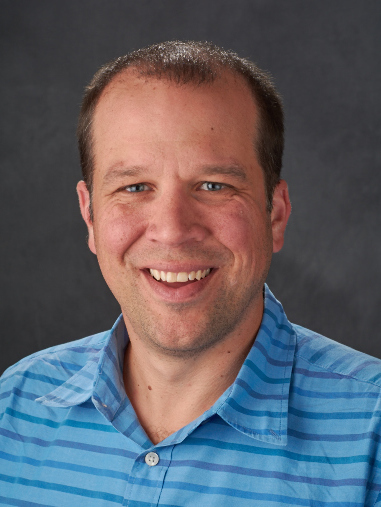WRI researchers are helping the Verona, Wis.-based healthcare information systems software company measure the effects of its extensive geothermal exchange system on surrounding groundwater.

Credit: James Tinjum
April 17, 2015
By Aaron R. Conklin
David Hart calls it “the perfect case study.”
And in this case, that case study consists of an enormous field on the expansive headquarters of one of the largest health-care information system software companies in the United States.
It’s here, on the ever-expanding corporate campus of EPIC Systems in Verona, Wis., that a group of researchers, supported by funding from the University of Wisconsin Water Resources Institute, is testing aspects of a system of economically and environmentally friendly geothermal heat exchangers. EPIC is using them to heat and cool its massive offices—and its 8,00-plus employees—instead of burning natural gas or other fossil fuels. The geothermal exchange system—which circulates water in a completely enclosed system—takes advantage of the fact that the temperature several feet below the ground’s surface remains at or near 50 degrees throughout the year. The circulating water in the loop system is heated and/or cooled via indirect contact of the underground circulation pipes with the near-constant-temperature earth, then pumped through plastic collector lines to high-efficiency mechanical heat pumps and chillers that air condition the occupied buildings. EPIC’s system is designed to operate without the use of anti-freeze, a choice that increases the efficiency of operation and eliminates the potential for environmental impact if a leak develops.
While the UW research team has measured the overall coefficient of the system’s performance—i.e., the ratio of extracted or injected heat to the amount of energy used to operate the system—to be well above 3.0, not all geothermal exchange systems in Wisconsin perform this well.
“The ability to understand how the heat’s being transferred into the ground, and how EPIC’s operation of the system affects its efficiency, is very key,” explained Hart, a hydrogeologist with the Wisconsin Geological and Natural History Survey. “The geology might work some places better than others. Hopefully, what we discover here will allow us to design better systems across Wisconsin.”
The project is expansive—by the time all is said and done, EPIC will have more than 6,100 vertical geothermal exchange wells that have been installed to depths ranging between 300 and 500 feet below ground surface. The WRI-supported piece is more focused. James Tinjum, a UW-Madison professor of engineering, and Christopher Choi, a UW-Madison professor of biological heat and mass transfer, and Hart, have teamed up with EPIC staff. They are evaluating the effectiveness of the heat transfer and, as a secondary goal, determining how the heat exchange process affects ground strata and groundwater.
To measure temperatures, the research team has drilled five groundwater wells to gauge the heat exchange. One is focused on capturing up-gradient readings, one on side-gradient readings, while the other three are focused on down-gradient readings. The readings are being captured by fiber-optic cables, a process Hart refers to as “sticking a long thermometer into the ground.”

Credit: James Tinjum
In addition, the team is measuring temperature profiles at various distances (10 meters, 25 meters, etc.) from the heat exchange loops. Those profiles will allow the researchers to calculate temperatures across the entire site and determine how well heat is transferred in the different rocks beneath the site. The key to understanding why EPIC’s system operates so efficiently and how to convey this operational knowledge to the overall industry, said Tinjum, is to measure the properties of the varying ground strata and groundwater with respect to geothermal exchange efficiency and vice-versa.
The team is also collecting groundwater samples to measure any change in water chemistry that may be caused by the heat exchange loops. The EPIC site, which had previously been used for agricultural purposes, contains a mix of dolomite, shale and sandstone, each of which might react to temperature changes differently. Preliminary research findings have indicated the local ground temperature is not raised above about 63.5 degrees, a benign temperature with respect to groundwater geochemistry. Furthermore, the research team has predicted, through modeling efforts, that ground temperature should return to background temperature in the mid 50’s within about 20 meters of the geothermal field.
Geothermal heat exchange systems have enjoyed an exponential growth in the United States in recent years, but not to the scale at which EPIC plans to harness them. Tinjum noted that many other Wisconsin companies are already moving to deploy energy efficient and renewable energy systems of their own and results from this study will benefit others considering the use of geothermal exchange.
Because the key to operating an efficient geothermal exchange system over the long term is to annually balance the heat exchange, EPIC also proactively uses the geothermal exchange system to preheat domestic water, aid in humidity control within its buildings and for snowmelt purposes, thereby reducing the need for ice melt chemicals.
“It’s really the scale that comprises the unique opportunity here,” said Tinjum. “This is the largest geothermal exchange system in North America. Instead of burning natural gas, we’re looking to optimize the mechanical geothermal performance of this system. The results of this project could become the basis for future design of geothermal systems statewide.”



